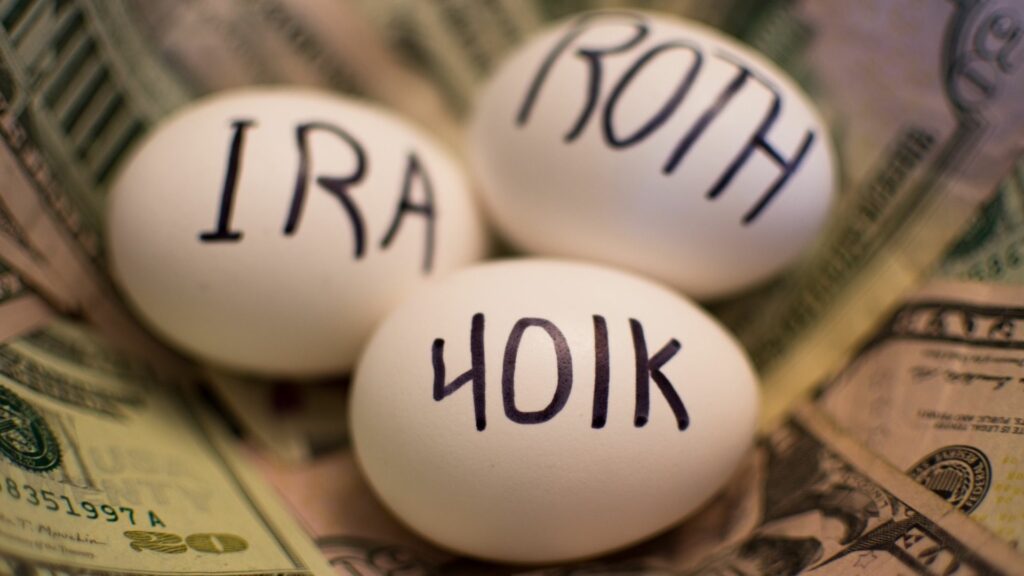Your 20s can be a very intense time full of transitions and opportunities.
You might be finishing or starting school; you might be beginning your first full-time job; you might be buying or renting your first house or apartment.
Needless to say, your budget will change quite a bit during this decade!
You’re not alone if you’ve ever found yourself asking “how much should I save in my 20s?”
So, what’s the answer to that question then?
Well, the short answer is…
…20 percent of your income.
Does that surprise you?
Let’s talk about it.
The 50/20/30 Rule

One of the best budgeting methods out there today is known as the 50/20/30 rule.
The “50” part of the 50/20/30 rule means that no more than 50 percent of your income should be used for your essential expenses.
Essential expenses include things like your rent or mortgage payment, utility bills, groceries, insurance premiums, and copays for healthcare appointments.
Basically, we’re talking about anything that is necessary for your life and is not a personal or discretionary expense.
If your essential expenses are adding up to more than 50% of your total income, then it’s time to think about making a change.
The best way to reduce the amount of your essential expenses is usually to downsize your living space.
You might consider moving to a smaller, less expensive apartment or house and living with more roommates.
You could also renegotiate your rent when the time comes or make a commitment to using your utilities less, although these will likely be smaller changes.
The “20” means that you should be investing and saving 20 percent of your income.
If you have an employer that offers you a 401(k) and matches your contributions to it, then those matched contributions should be your first priority.
After that, you should focus on maxing out your Roth IRA. (This is usually $6000 per year.)
If you’ve taken advantage of your matched 401(k) contributions and maxed out your Roth IRA, then you can make deposits into a regular, taxable brokerage account and trade as you please!
When necessary, you can also use part of this 20 percent to put towards savings.
For example, if you haven’t built yourself an emergency fund yet, it would be wise to use all or part of your 20 percent to build up that emergency fund.
A good emergency fund should have enough money to cover four to six months of expenses in the event that you lose your job or have to pay a large, unexpected expense.

The “30” in the 50/20/30 rule is the best part: you get to spend it on yourself!
The remaining 30 percent goes towards personal, discretionary expenses such as restaurants, movies, video games, and beauty products.
What If I Can’t Save 20 Percent?
Of course, you might not be able to have a perfectly balanced budget using the 50/20/30 rule while you’re in your 20s.
You might be in school and you don’t have time to hold down a full-time job.
You might be required to live in a certain location that doesn’t have a lot of flexibility on rent rates.
There is an infinite list of financial limitations that you might face while you’re young, so you just have to do the best you can!
If you’re working your hardest but you still can’t invest 20 percent of income, that’s okay. Invest what you can!
If you’ve made all the sacrifices you reasonably can but your essential expenses still represent more than 50% of your total income, that’s okay! Try to borrow some budget room from the personal expenses section.
If you’ve read our article on the top 1% at every age, then you know that the average income of a 25 year old is about $41,000.
If you make $41,000 per year, then you should be investing $8200 (20 percent).
Open a Roth IRA

If you haven’t opened a Roth IRA for yourself yet, the time to do so is NOW.
A Roth IRA, or individual retirement account, is a tax-advantaged retirement account that allows you to make contributions with after-tax dollars.
What does that mean?
Well, with a traditional IRA, you get a tax deduction for the contributions you make, meaning that your taxable income is reduced by the total amount of your contributions.
This is a great advantage for those who are in a higher tax bracket. If you can delay paying income taxes until you’re retired and in a lower tax bracket, why wouldn’t you?
But what about younger individuals who are just starting out in the workforce?
If you have an entry level job, you’re most likely in a lower tax bracket than you will be in retirement.
So you don’t necessarily need that tax deduction now; it would be a lot more useful to you down the road.
And that’s where the Roth IRA comes in!
When you contribute to a Roth IRA, you don’t get the same tax deduction you get from a traditional IRA.
Instead, you make your contribution with after-tax dollars, and then your money is allowed to grow completely TAX-FREE.
That’s right; you pay your income tax upfront and you won’t have to worry about any taxes when you withdraw the money in retirement.
It is incredibly important for young people to get started with a Roth IRA as soon as possible. The sooner you start investing, the longer your money will have to compound tax-free!
If you’re looking to open your first Roth IRA, I highly recommend checking out Acorns. Acorns is a robo-advisor that does all the work for you by letting you round up your every day purchases!
IRAs do come with contribution limits, net income limitations, and other rules. You can learn more about those rules on the IRS website.
Invest In Index Funds

Once you have your Roth IRA all opened up, it’s time to invest in securities that will benefit you by growing steadily over the long term.
Index funds are a type of fund that track, or mimic, a specific index such as the S&P 500 or the Dow Jones Industrial Average.
You can easily buy into an index fund in the form of an ETF, or exchange-traded fund.
An ETF is a type of fund that trades just like a stock on the stock market.
Unlike a mutual fund, you can buy or sell an ETF at any time the stock market is open and with much less fees.
One of the biggest benefits of investing in ETFs is the natural diversification that comes with it.
When you buy an ETF, you are exposed to every single security inside of that fund.
So if you buy an S&P 500 ETF, that means that you have a diversified security filled with 500 different stocks!
Final Thoughts
At the end of the day, you shouldn’t compare the dollar amount you’re investing to the dollar amount that anyone else is investing.
Your goal should be to work hard, make sacrifices where you can, and invest as much as possible as early as possible.
We are paid subscribers to dozens of stock newsletters. We actively track every recommendation from all of these services, calculate performance, and share the results of the top performing stock newsletters whose subscriptions fees are under $500. The main metric to look for is "Excess Return" which is their return above that of the S&P500. So, based on last 3 years ending June 29, 2025:The Best Stock Newsletters as of June 29, 2025
Ranking of Top Stock Newsletters Based on Last 3 Years of Stock Picks
Rank Stock Newsletter Stock
PicksAverage
ReturnExcess
ReturnPercent
ProfitableMax %
Return1. ![]()
Alpha Picks76 63% 40% 73% 969% Summary: 2 picks/month based on Seeking Alpha's Quant Rating; Retail Price is $499/yr. See details in our Alpha Picks Review. July, 2025 Promotion:
Save $502. ![]()
Moby.co308 43.3% 12.3% 74% 1764% Summary: 60-150 stock picks per year, segmented by industry; Retail Price is $199/yr. Read our Moby Review. July, 2025 Promotion:Next pick free! 3. ![]()
Stock Advisor72 41.2% 6.9% 78% 258% Summary: 2 picks/month and 2 Best Buy Stocks lists focusing on high growth potential stocks over 5 years; Retail Price is $199/yr.
Read our Motley Fool Review.July, 2025 Promotion: Get $100 Off 4. ![]()
Value Investor39 17.5% 6.1% 38% 410% Summary: 10-25 stock picks per year based on Zacks' Quant Rating; Retail Price is $495/yr. Read our Zacks Review. July, 2025 PROMOTION:$1, then $495/yr 5. ![]()
Rule Breakers66 40.0% 4.7% 61% 311% Summary: 2 picks/month focusing on disruptive technology and business models; Lifetime average return of 355% vs S&P500's 149% since 2005; Now part of Motley Fool Epic. Read our Motley Fool Epic Review. Current Promotion: Save $200 6. 
TipRanks SmartInvestor121 10.6% 3.7% 55% 340% Summary: About 1 pick/week focusing on short term trades; Lifetime average return of 355% vs S&P500's 149% since 2015. Retail Price is $379/yr. Read our TipRanks Review. Current Promotion: Save $180 7. 
Action Alerts Plus394 20.0% 3.4% 57% 220% Summary: 100-150 trades per year, lots of buying and selling and short term trades. Read our Jim Cramer Review. Current Promotion: None 8. ![]()
Stock Advisor Canada36 32.3% 0.5% 69% 378% Summary: 1 pick/month from the Toronto stock exchange; Retail Price is CD$199/yr. Read our Motley Fool Canada Stock Advisor Review. July, 2025 Promotion: Save $100 Top Ranking Stock Newsletters based on their last 3 years of stock picks' performance through May 31, 2025 as compared to S&P500. S&P500's return is based on average return of S&P500 from date each stock pick is released. NOTE: To get these results you must buy equal dollar amounts of each pick on the date the stock pick is released. Investor Business Daily Top 50 based on performance of FFTY ETF.
